100 years of the House of Windsor: The story of the British royal family's great rebranding
Clive Aslet reports on the evolution of the House of Windsor – through George V, Edward VIII and George VI to Elizabeth II
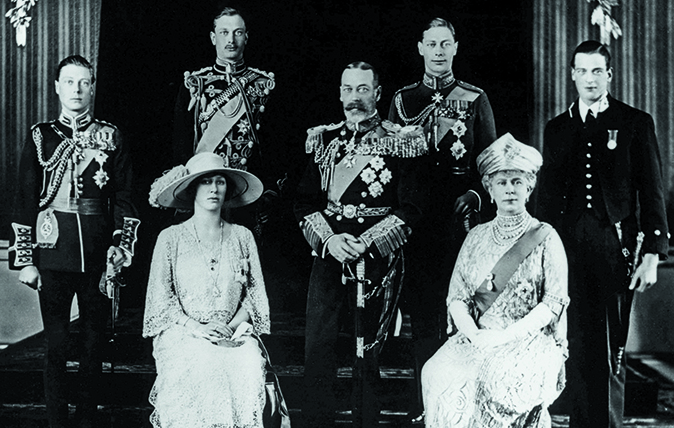
The name was inspired. Windsor – a new house for the Royal Family that instantly evoked the permanence and pageantry of a castle. A century on, the choice of patronymic seems more appropriate than ever.
Arguably, despite the World Wars, the loss of empire and a social revolution, the Royal Family looks more secure than it did in 1917, the year that George V personally vetoed the government proposal that his cousin, Tsar Nicholas II, should be given asylum in Britain in case the monarchy here suffered the same fate as the Romanovs.
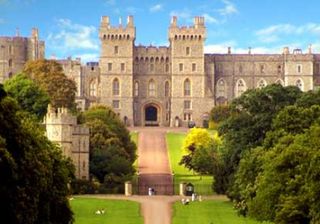
Tradition and romance, service and ceremony – these qualities, instantly evoked by the image of Windsor Castle, have provided the family that bears its name with what has mostly been an impregnable mystique.
Inspiration was not generally George V’s stock in trade. A younger son who didn’t expect to become king until his elder brother, the Duke of Clarence (‘Eddy’), died in 1892, he was happiest as a sailor and country gentleman.
He had no intellectual or artistic pursuits, hated public appearances and, for the first 15 years of his reign (until his mother’s death), was happy to forego the big house at Sandringham in favour of York Cottage, where he lived hugger-mugger with his family and attendant footmen.
HG. Wells, who complained of ‘an alien and uninspiring Court’, noted the lack of panache, to which the King responded: ‘I may be uninspiring, but I’ll be damned if I’m an alien.’ To prove as much, he rebranded the family.
The need for a change, precipitated by a German bomber
The decision to do so in 1917 might seem surprising, but may have been fired by two events of that year. In March, London was bombed by the newly commissioned Gotha G.IV – a name that focused public attention on the King’s Germanic roots – and on March 15, Nicholas II was forced to abdicate, ending the Russian monarchy.
Sign up for the Country Life Newsletter
Exquisite houses, the beauty of Nature, and how to get the most from your life, straight to your inbox.

Until then, there had seemed no need for change. To the despair of his courtiers, the King shared many of the austerities of the First World War with his people. Always a thrifty housekeeper, Queen Mary scrimped with zeal.
The Foreign Secretary A. J. Balfour’s private secretary recorded the dread with which courtiers left the luxury of their own tables to face ‘the Spartan regime of the Royal household’. When late for breakfast, an equerry, who had ordered a boiled egg, was reprimanded by the King, who implied that such gluttony might lose Britain the war.
For the duration of the hostilities, the King, a stickler for correct dress, ordered no new clothes other than khaki, in which he tirelessly reviewed troops, bestowed decorations and visited factories and hospitals.
Surely his patriotism was beyond question? Besides, the conflict had already been raging for three years. As soon as war had been declared in 1914, pork butcher’s shops with Germanic names had been looted and, according to Graham Greene, dachshunds stoned to death in Berkhamstead.
Although the composer Holst didn’t finally abandon the noble particle, to which his branch of the family was never really entitled, until September 1918, other people with foreign names had been quick to change them or leave the country. In Russia, St Petersburg became Petrograd in 1914.
Admittedly, the King’s predicament was more difficult. Although his surname was popularly presumed to be Saxe-Coburg- Gotha, even genealogists were not sure that it was not Wettin (the Prince Consort’s patronymic) or Guelf (that of the House of Hanover).
It was Lord Stamfordham, the King’s private secretary, still writing memos in the large script favoured by typewriter-hating Queen Victoria as her sight failed, who proposed the happy solution of Windsor.
The Kaiser cracks a joke; nobody in Britain laughs
The proclamation announcing the new name on July 17 gave the Kaiser the opportunity to make a rare joke: he hoped he would soon see a production of that charming operetta ‘The Merry Wives of Saxe-Coburg- Gotha’. However, nobody in Britain heard him. Like other constitutional innovations, the House of Windsor quickly became so established as to seem immemorial.
George V did not have the easy affability of his father, Edward VII, or son, Edward VIII, but neither did he share their weaknesses for loose living and controversial relationships. As his biographer, Kenneth Rose, comments, few in 1910 could have regarded his accession ‘with enthusiasm, or even confidence’.
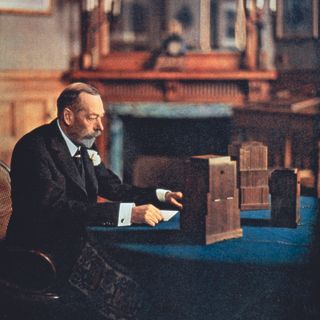
By his death in 1936, however, this diffident, dull monarch had shown himself to be well suited to the needs of his people.
Although an arch-conservative by temperament, he was sufficiently flexible – and sensitive to constitutional protocol – to force Lloyd George’s People’s Budget through Parliament by threatening to flood the House of Lords with new peers in 1911.
When the Great Depression began to bite, he volunteered a 10% cut in his Civil List allocation and urged the Labour leader Ramsay Macdonald to form a national government, uniting the parties. Under this first embodiment of the House of Windsor, the British Empire reached its largest geographical extent.
His Silver Jubilee of 1935 was celebrated with fêtes, pageants, church services, sports days, decorated toffee tins and – needless to say, given His Majesty’s passion for philately – commemorative stamps. In faraway Timmins, in north-east Ontario, Canada, a three-mile-long parade of floats was mounted. According to the local paper, this demonstrated the extent to which ‘the love of Britain’s flag and Britain’s King, the emblems of an Empire’s sincere efforts for freedom, democracy [and] progress’ were enshrined in the hearts of the different people of the town, wherever they came from originally.
The House of Windsor has been at its best when following George V’s example. It might have been thought that Edward VIII’s appeal was more modern and better suited to the times – although his father had doggedly maintained the formality of the Edwardian court, the new King hated its stuffiness and rigidity.
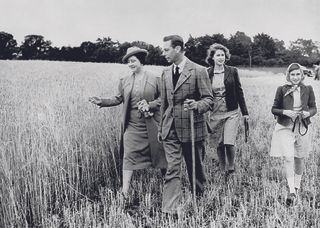
Having been rapturously received on his visits to the USA, he enjoyed the freedom of American life: he remodelled Fort Belvedere as a British equivalent of the homes he had seen on Long Island: convenient, modern, designed for a life of sport and pleasure, based around what George V called ‘those damn weekends’.
His playboy charm won him many admirers in the age of the Hollywood matinee idol, but his father’s dire prediction that he would come to ruin within a year proved all too correct. His love of twice-divorced Wallis Simpson, the latest of a line of American girlfriends, caused him to abdicate after just 11 months.
The title, by which he was then known, Duke of Windsor, gave a prominence to the new family name that his father could never have expected. The Scottish Labour MP George Hardie said that the abdication crisis did ‘more for republicanism than 50 years of propaganda’. The House of Windsor was shaken.
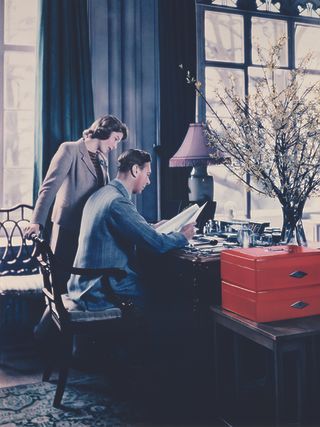
The radiant young queen who proved the perfect tonic
George VI, who succeeded to the throne, was another younger brother.
That was not the only quality that he shared with George V. Like him, he was modest in his domestic tastes and loved family life. Although his father’s horror of the First World War had caused him to develop an unexpected degree of pacifism by the end of his life, his son also found himself to be a war leader: his behaviour during the Second World War was much the same as George V’s had been in 1914–18. He and Queen Elizabeth set an example of fortitude, duty and self-denial.
After the Second Word War, the monarchy was prime among the institutions having to adapt to Indian independence and the loss of empire. The arrival of Elizabeth II to the throne in 1952 gave both the nation and the monarchy the tonic that they needed.
Here was a radiant young Queen who personified the country’s new destiny as it began the difficult process of reinvention.
By February 6 2017, the anniversary of her accession, she had provided stability for 65 years, during sometimes gloomy and fractious times. A natural conservative, she adopted the idea of monarchy pioneered by George V – whom she called ‘Grandpa England’ – and developed by George VI, combining iron duty with devotion to family and an uncomplicated religious faith.
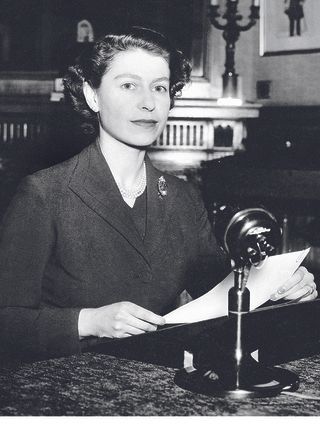
From the accession to the annus horribilis
Is the House of Windsor still a castle? Castles are designed to keep people out.
One of the challenges of a reign that has coincided with a media explosion – and an ever more scandal-mongering press – has been to manage access to the Royal Family’s inner life. Early experiments in raising the portcullis proved unsatisfactory: glimpses of what lay behind the curtain walls merely encouraged a greater degree of intrusiveness.
It may have seemed that the castle had been stormed altogether when Her Majesty suffered her ‘annus horribilis’ of 1992, when The Princess Royal divorced, Prince Andrew separated from his wife and Prince Charles’s marital difficulties erupted into the War of the Waleses. Clearly, structures that the early 20th century had erected were no longer serviceable in an age that had seen so much change, not least among the landed families whose way of life had once been similar to the royals. The fire that gutted the state apartments of Windsor Castle in 1992 seemed alarmingly symbolic.
The castle was rebuilt, however, and the House of Windsor has come into the 21st century in the same condition as Britain’s great country houses. Once they were written off as impractical, but a new generation has found ways of converting them to modern needs. Metaphorically, more informal living spaces have been created: grandeur can be laid on for those occasions when it is needed, but, at other times, the younger occupants can pursue lives that resemble those of other members of their set.

This can no longer be a castle in the conventional sense because no ramparts are strong enough to keep out the digital age, but then the life pursued inside this house, by its younger representatives, does not seem as strange or remote as that of half a century ago. Even so, the House of Windsor maintains the sense of otherness that is essential to its survival as the mechanism for providing the head of state.
It is a mansion with many rooms, expensive at times to heat. Eventually, wings may be closed, as it is realised that not all the members of a spreading family are required for public duties. These are matters for the future. The Prince of Wales is increasingly assuming more of the responsibilities previously shouldered by his mother: for the first time in the history of the House of Windsor, it will be represented by a champion of architecture. In a sometimes shoddy world, it will continue to express the vitruvian qualities of Firmness, Commodity and Delight.
Clive Aslet
-
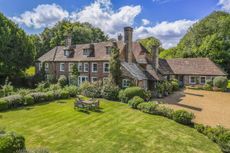 An eight-bedroom wonder in East Sussex where the outdoors are an adventure
An eight-bedroom wonder in East Sussex where the outdoors are an adventureThe interiors of Old Middleton are pretty good too.
By Arabella Youens Published
-
 Seeing you seeing me: How did British artists portray eachother in the 20th and 21st centuries?
Seeing you seeing me: How did British artists portray eachother in the 20th and 21st centuries?The 'Seeing Each Other: Portraits of Artists' exhibitions comprises paintings, prints, drawings, photography, sculpture and installation spanning 125 years.
By Annunciata Elwes Published